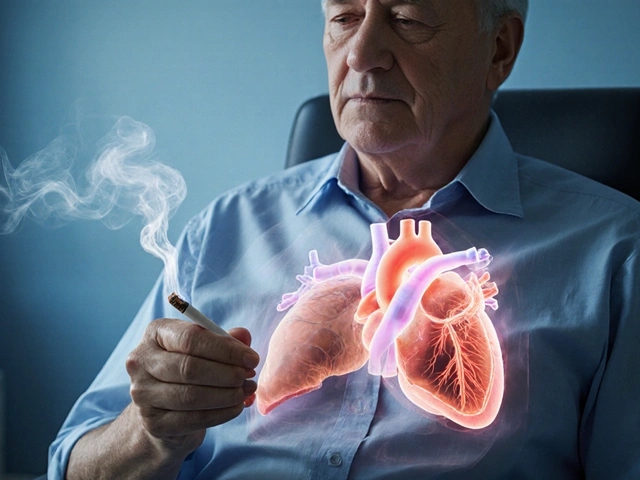Psoriasis: What It Looks Like and How to Manage It
About 2–3% of people worldwide live with psoriasis — an immune-driven skin condition that shows up as red, scaly patches. Some spots are small and easy to hide; others cover large areas and itch or burn so much they disrupt sleep. You don’t have to accept constant flare-ups. Small changes can cut the number and intensity of flares.
Spotting symptoms and common triggers
Psoriasis usually looks like thick, red patches with silvery scales. Common places are elbows, knees, scalp, lower back, and nails. If your nails pucker, lift, or get yellow-brown spots, that can be psoriasis too.
Triggers are personal, but these are frequent culprits: stress, skin cuts or sunburn, cold dry weather, certain medications, smoking, and heavy alcohol use. Spot patterns: a flare after a cold, a new rash after a sunburn, or worse symptoms during winter. Noticing patterns helps you reduce triggers fast.
Practical care you can start today
Keep skin soft. Thick creams and ointments beat lotions for psoriasis. Apply while skin is damp after a shower to lock in moisture. Use fragrance-free products and avoid hot showers that strip oils.
For mild patches try over-the-counter hydrocortisone or vitamin D creams. They reduce redness and scale. If they don’t help in a couple weeks, see a clinician — early treatment often prevents spread.
Light therapy (phototherapy) can calm moderate cases. It’s done under medical supervision and works well for many people. For widespread or stubborn psoriasis, doctors may prescribe pills or injections. Common options include methotrexate, cyclosporine, and newer biologics that target specific immune signals (TNF, IL-17, IL-23). These meds can be life-changing, but they need monitoring for side effects.
Don’t ignore mental health. Psoriasis can hit confidence and cause anxiety or depression. Support groups, counseling, or a trusted clinician can help a lot.
Thinking of buying meds online? Check the pharmacy’s license, require a prescription, read recent reviews, and avoid prices that seem too good to be true. If a site ships without a prescription or hides contact info, walk away.
Small lifestyle shifts add up: quit smoking if you can, limit alcohol, manage stress with short daily routines (breathing, walking), and keep a simple skin care plan. Track what makes flares worse so you can avoid it next time.
If your rash spreads rapidly, affects joints, causes severe pain, or you notice signs of infection (fever, pus, extreme redness), contact a doctor right away. With the right plan — topical care, trigger control, and medical treatments when needed — most people get meaningful relief and better quality of life.

The Top Psoriasis Triggers and How to Avoid Them
In my latest blog post, I dive into the common triggers of psoriasis and offer advice on how to avoid them. We explore how factors such as stress, skin injuries, certain medications, and even weather changes can exacerbate this skin condition. We also discuss the importance of maintaining a healthy lifestyle, including a balanced diet and regular exercise, to help manage psoriasis. Additionally, we shed light on the significance of avoiding alcohol and tobacco, which can trigger psoriasis flare-ups. Join me in understanding this complex condition and learning practical ways to keep it under control.
Health and WellnessLatest Posts
Tags
- online pharmacy
- medication
- dietary supplement
- side effects
- online pharmacy UK
- medication safety
- mental health
- impact
- online pharmacies
- dosage
- skin health
- health
- pain relief
- dietary supplements
- massage therapy
- medication side effects
- eye inflammation
- health benefits
- mental health treatment
- thyroid medication




